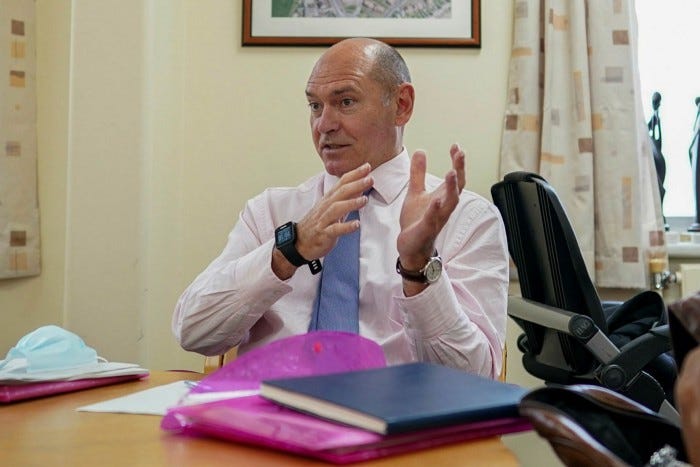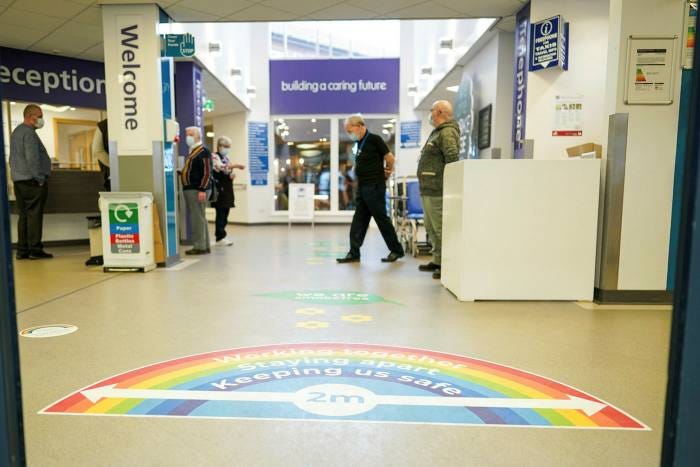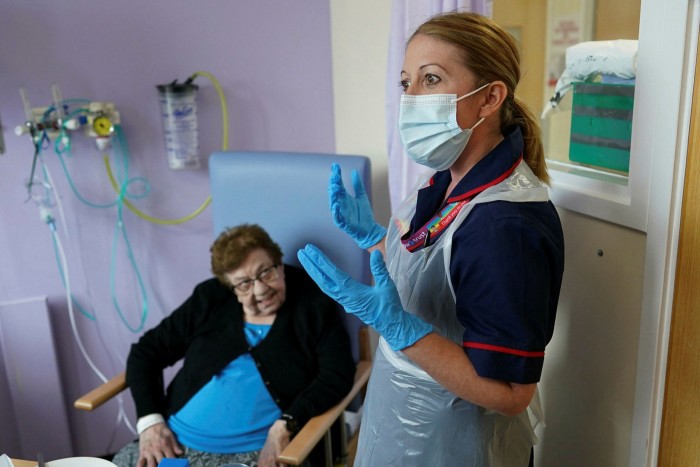The case of the Emergency Hub Model, and Patient Segmentation for Covid Patients
Financial Times
March 2, 2022
At Northumbria Healthcare NHS Foundation Trust in England’s north-east, Mary Lee is eagerly awaiting the all-clear to return home.
The 80-year-old, who has spent three weeks on a geriatric ward after a fall, will be accompanied by a community nurse and an occupational therapist.
They will carry out a thorough on-the-spot check, providing or recommending equipment and other support to ensure she can continue to live there safely.
Lee’s care is an example of how the NHS is seeking to reduce capacity pressures with innovative approaches.
As the government’s new health and social care levy takes effect on Wednesday, it could also show how best to direct the additional £36bn that will be spent over the next three years.
As the government’s new health and social care levy takes effect on Wednesday, it could also show how best to direct the additional £36bn that will be spent over the next three years.
Karen Hutton, who leads the programme from which Lee is benefiting, said that previously assessments were spread over a longer period, sometimes leaving a patient in hospital while they waited for the checks to be completed and equipment delivered.
“You’re not getting that any more,” said Hutton. “We’re doing that all as a bit of a one-stop shop within that patient’s home.” She added that it produces “better outcomes”.
Lee is a fan of the approach, which blurs the often rigid divisions between hospital and community care: “it gives you more peace of mind,” she said.
The injection of extra funding, which will come from a 1.25 percentage-point rise in national insurance contributions for employers and employees, will initially be used to clear waiting lists for treatment, which stand at a record 6.1mn.
The injection of extra funding, which will come from a 1.25 percentage-point rise in national insurance contributions for employers and employees, will initially be used to clear waiting lists for treatment, which stand at a record 6.1mn
Northumbria’s chief executive, Sir James Mackey, is also the NHS’s national director of elective recovery and is aware that, in return for the money, the health service must meet a commitment to deliver 30 per cent more treatment than before the crisis and an extra 9m diagnostic tests.
“It’s an understandable part of the Treasury deal and that’s . . . what we’re going to have to deliver . . . over a period of time,” he said.

Mackey said that while the public had overwhelmingly supported the NHS at the start of the crisis, they had become “more and more grumpy about wanting access to care, completely understandably . . . Seeing an extra tax on your payslip will drive a bit more [public] accountability and, honestly, I think that’s a good thing”.
Northumbria has fared far better than most health trusts, managing both to balance its finances and meet demanding targets on waiting times, thanks to plans that were set in train years ago. However, its model will not be easy to replicate across the NHS.
The trust has the shortest A&E waiting times in the country.
It decided over a decade ago to build a hospital dedicated to emergencies that is fully staffed by specialists.
Tests can be ordered, and treatment plans determined, within 12 to 16 hours rather than the two or three days it can take at facilities where patients are initially seen by generalists.
This results in quicker discharges, relieving pressure on beds.
It decided over a decade ago to build a hospital dedicated to emergencies that is fully staffed by specialists.
Tests can be ordered, and treatment plans determined, within 12 to 16 hours rather than the two or three days …
Simon Eaton, a diabetes consultant in charge of medicine and emergency care at the trust, said the idea of an emergency “‘hub” was “first thought about 15 [or] 16 years ago [with] 10 years of planning before we actually built the place”.
He acknowledged that the model was not a quick fix for clogged emergency departments. “None of the things we’re doing can be replicated quickly,” he said.
Also difficult to replicate is an approach that allowed the trust, which covers a widely dispersed, partly rural population, to keep elective surgery going through the difficult months of the pandemic, when many hospitals stopped most non-emergency treatment.
Northumbria carefully segregated Covid patients across its multiple sites, allowing parts of several hospitals to be reserved for electives. As a result it has been able to carry out 30,000 operations and procedures since June 2020, according to Eliot Sykes, an intensive care consultant and clinical director for surgical services.
Northumbria carefully segregated Covid patients across its multiple sites, allowing parts of several hospitals to be reserved for electives
“What’s equally, if not more, important is we did it safely. Out of those 30,000 patients, we’ve had no true hospital-acquired Covid infections,” he said, adding that hospitals with a single site may find this separation harder to achieve.
Much of Northumbria’s success is underpinned by the strong relationships it has built with the area’s GPs and local authorities, but this is not easy to replicate quickly either.
Improving the NHS takes time, acknowledged Mackey. “So whenever anybody comes here, or we go somewhere else and see something that’s really fantastic, there’s usually a bit of bad news that it started 20 years ago,” he said.
But he believes the spirit of innovation that has characterised the NHS throughout the pandemic will come to its aid as it recovers.
“We are making massive progress in very long waits,” he said, disclosing that nationally the number of patients waiting more than two years for hospital treatment — due to be eliminated by July — has been falling for each of the past seven weeks.
His own trust now has only about 20 people waiting over a year for treatment, “so in a few months time, we’ll have, to all intents and purposes, recovered”, he said. He forecast that in about 18 months the wider north-east will have done so too.
But he warned that there was huge variation around England. “Some parts of the country could take five or six years [to recover] because of the shape they were in before Covid, bigger Covid impact, other matters that impact their health infrastructure that makes it harder to get going again,” he said.

The 10mn “missing” patients, who would have been expected to have sought care over the period of the pandemic during normal times, create huge additional uncertainties as the service waits to see how many will eventually come forward, he added.
The 10mn “missing” patients, who would have been expected to have sought care over the period of the pandemic during normal times, create huge additional uncertainties as the service waits to see how many will eventually come forward, he added.
Mackey acknowledged that the health service is under severe government pressure to clear the waiting lists. “I’m steeped in it. I see it, I feel it, I’m part of it,” he said. But he makes clear that the NHS should be aiming to deliver such a strong return on the investment that it can make the case for even more funding.
“
Let’s improve things so quickly we’ve got a fantastic case that we need more resource . . . Let’s get us into a position in a couple of years’ time where things are improving so quickly the government has a difficult choice about whether it continues to back improvement in the NHS because it’s a bankable proposition. That’s where we need to be,” he said.
Originally published at https://www.ft.com on April 3, 2022.
TAGS: Waiting Lists; Backlog crisis; New of Care; High Efficiency Health Care ; Public Health












